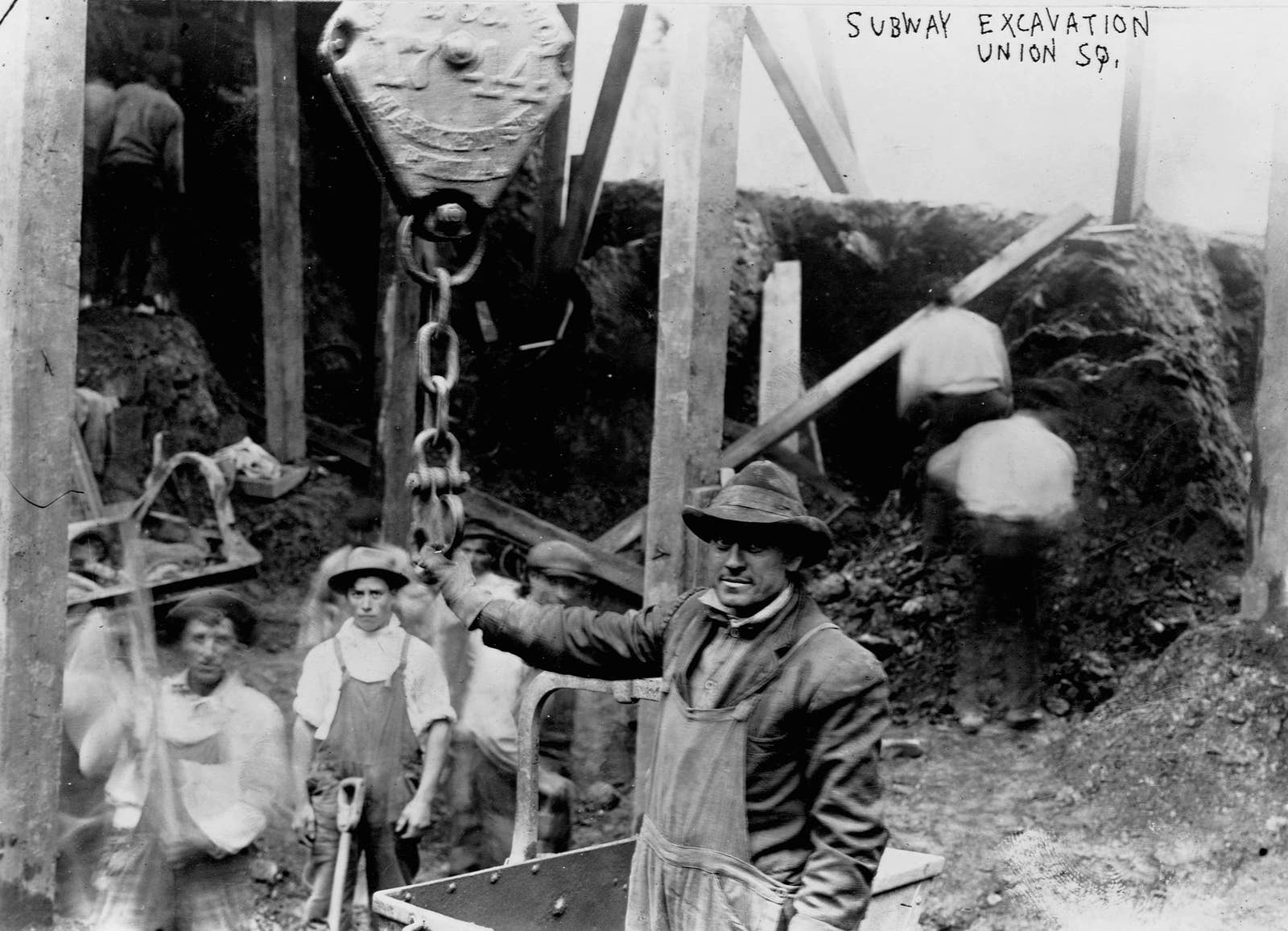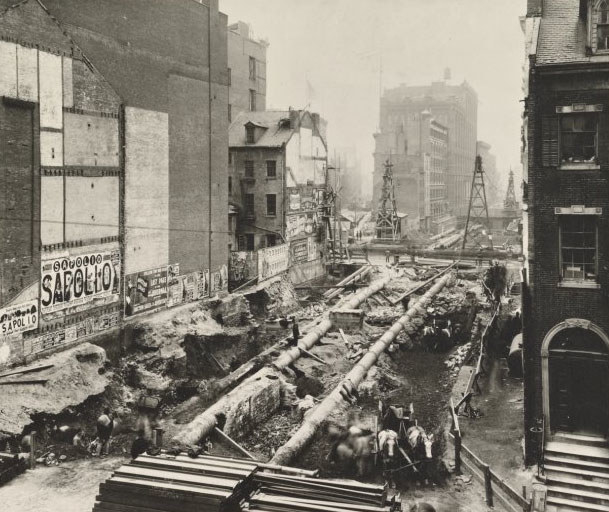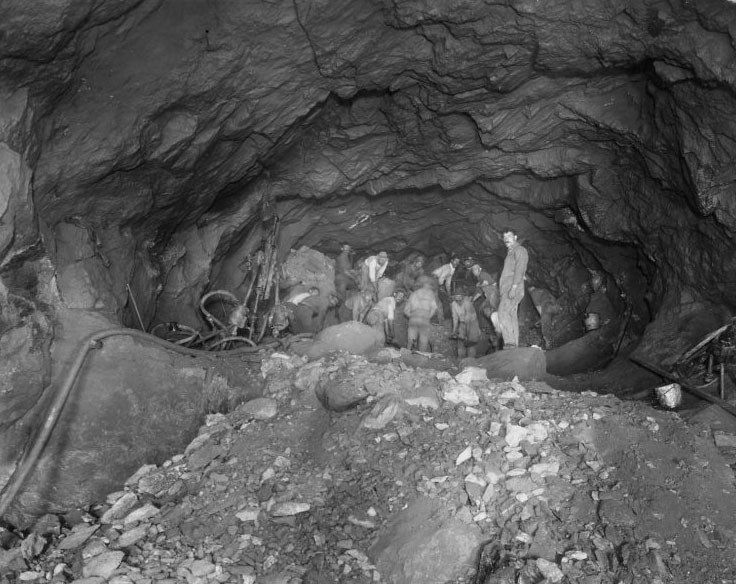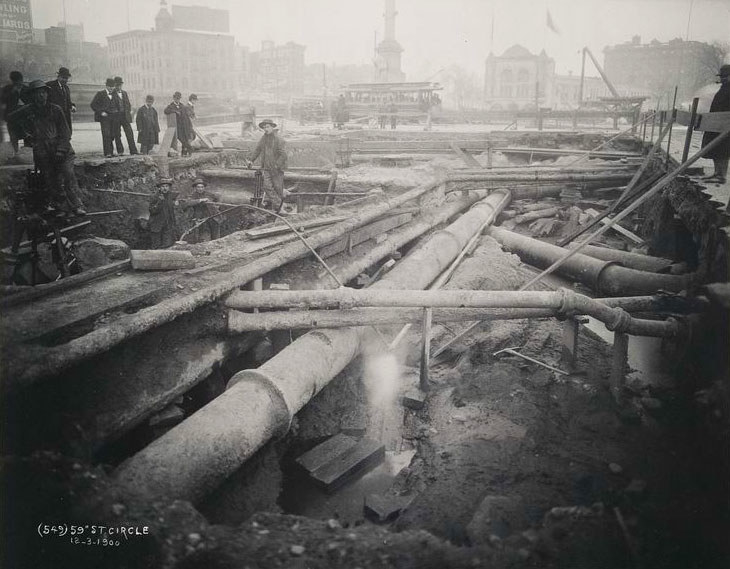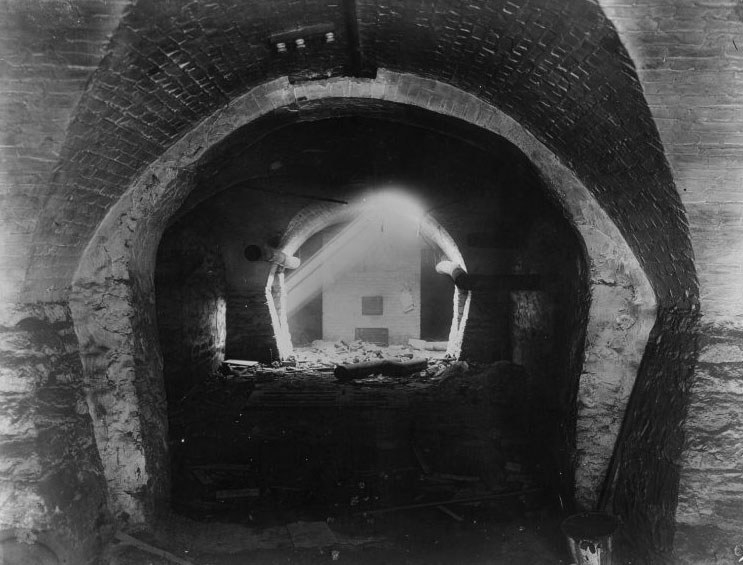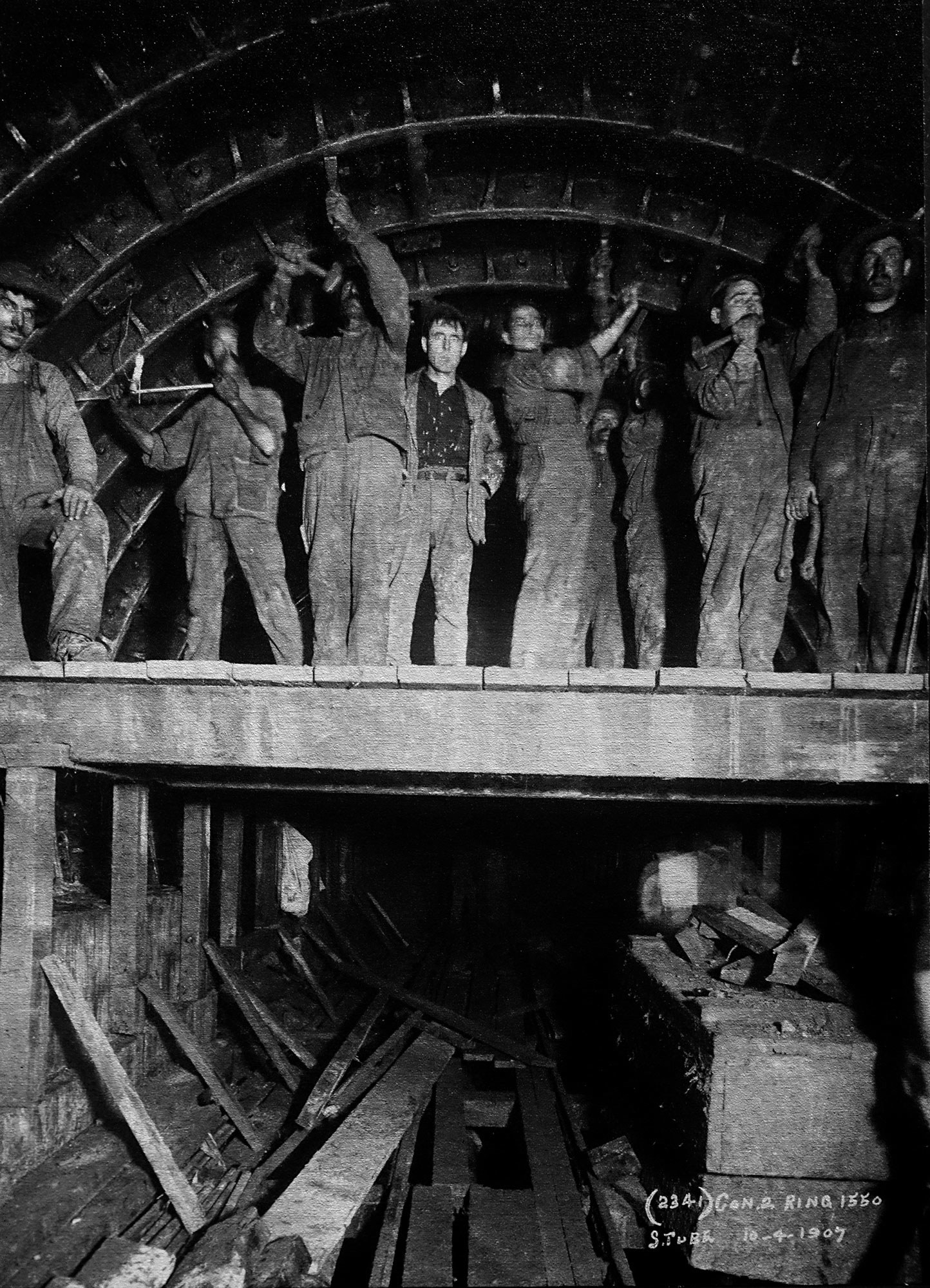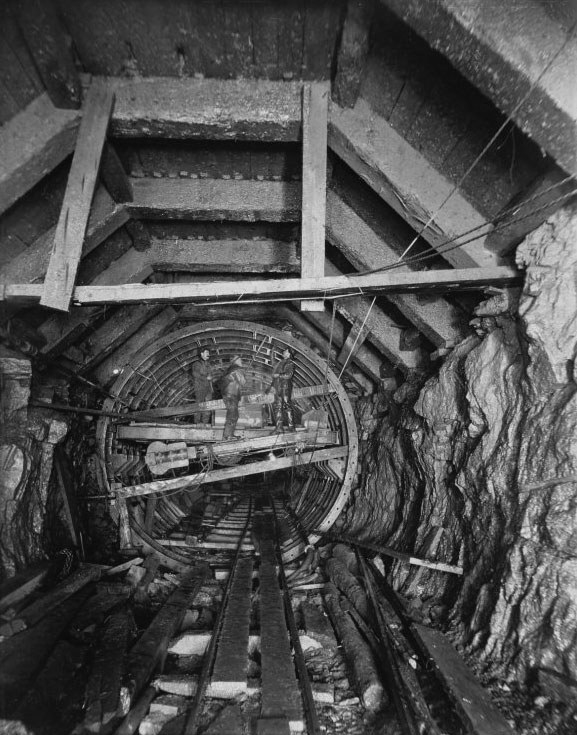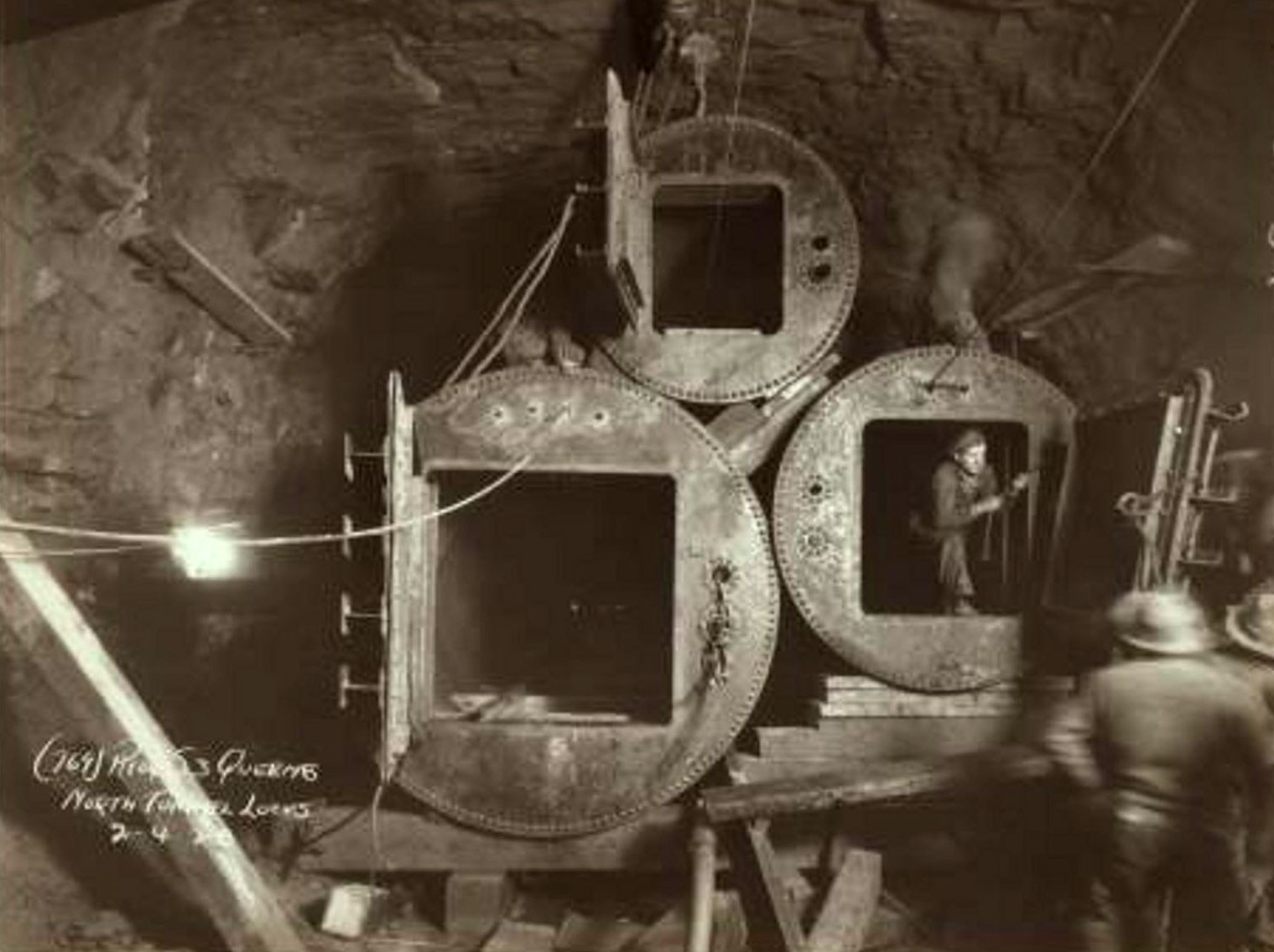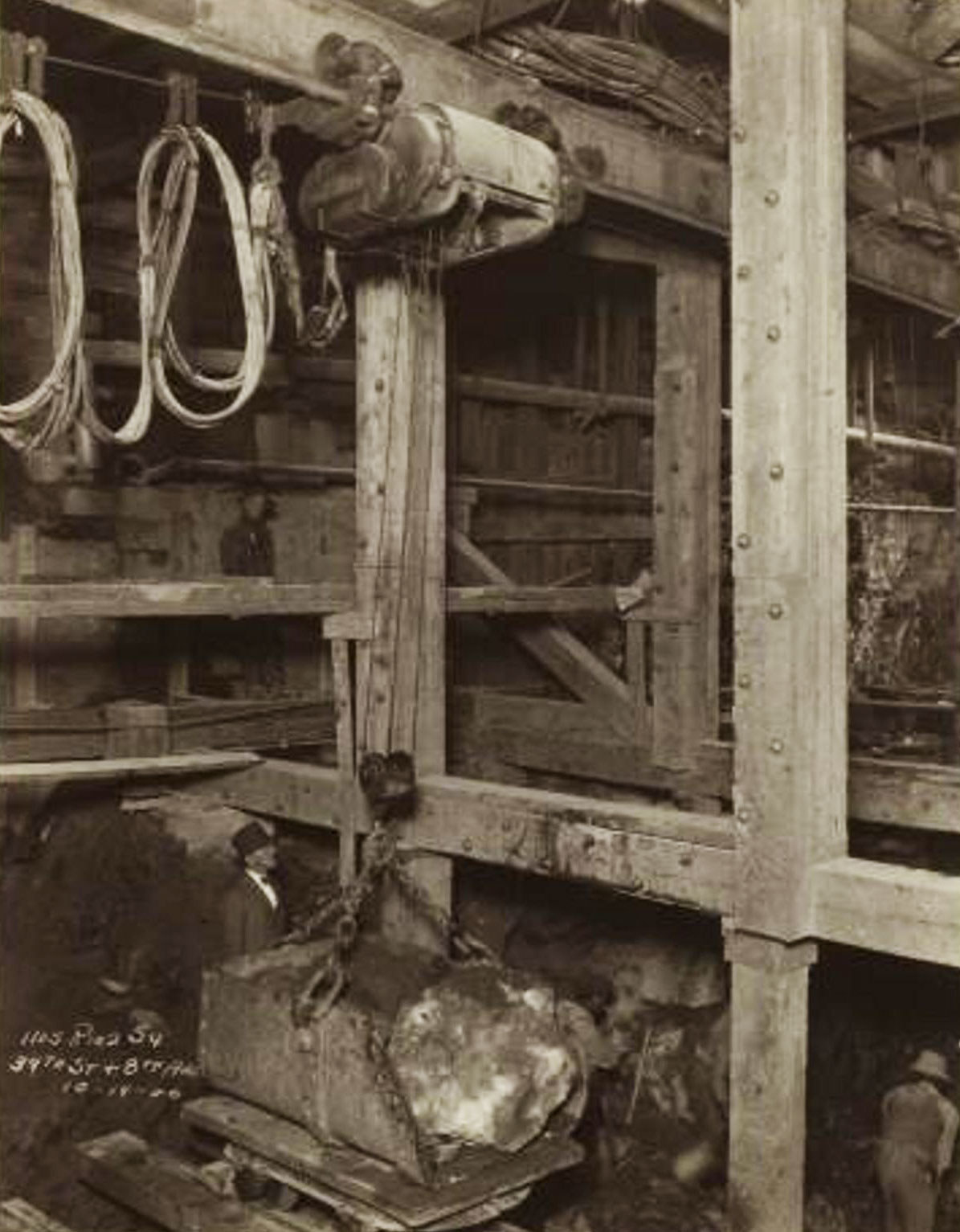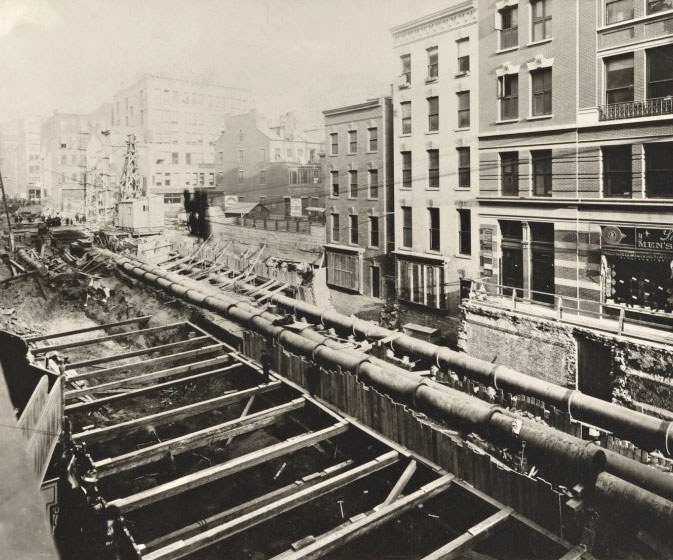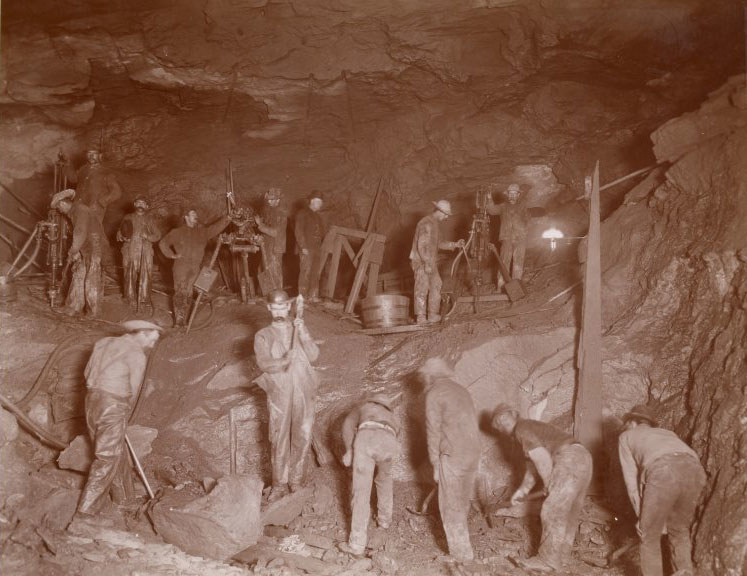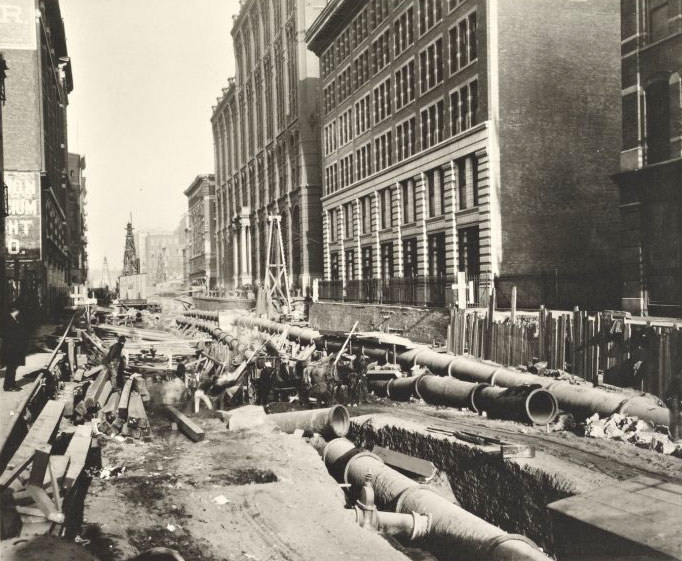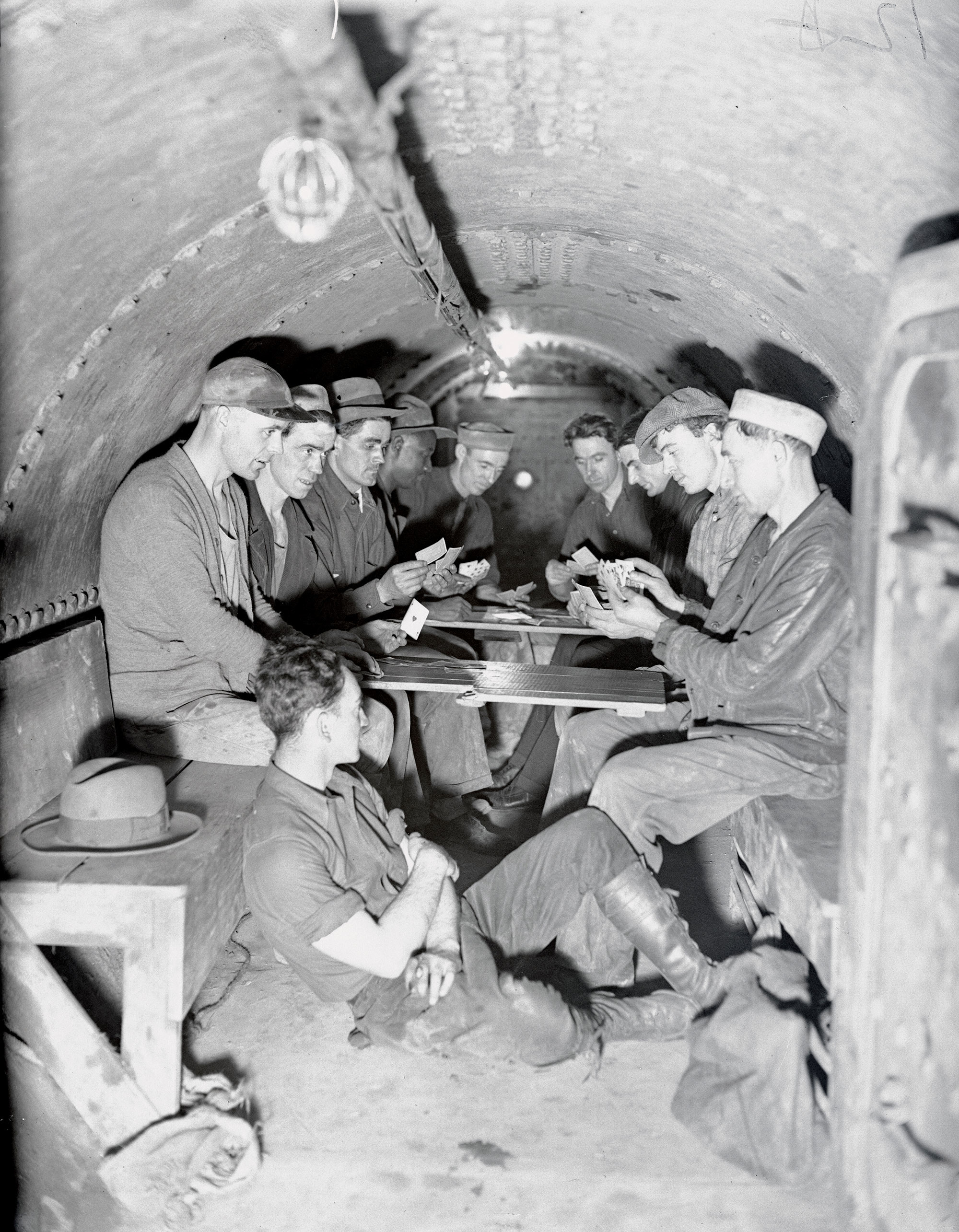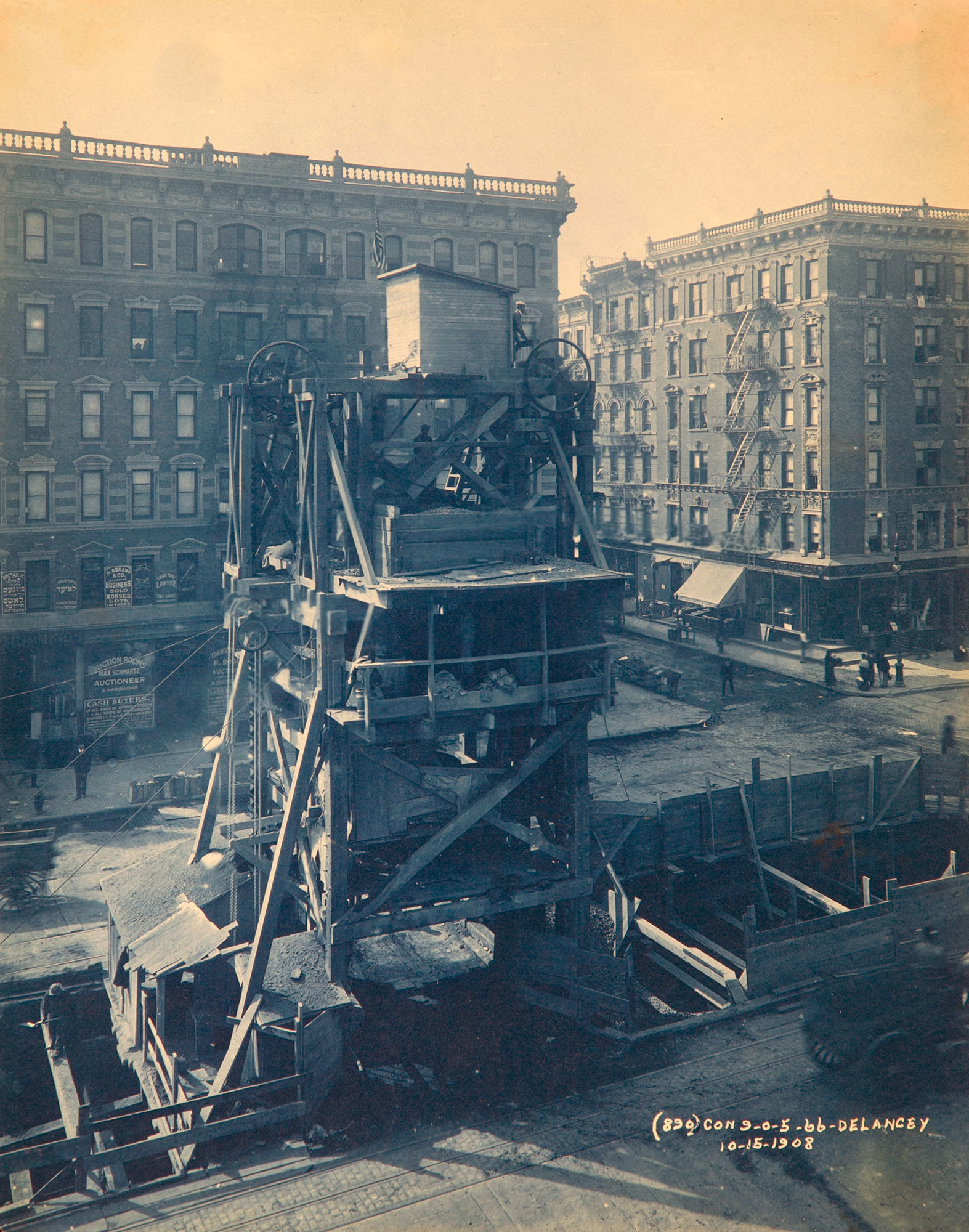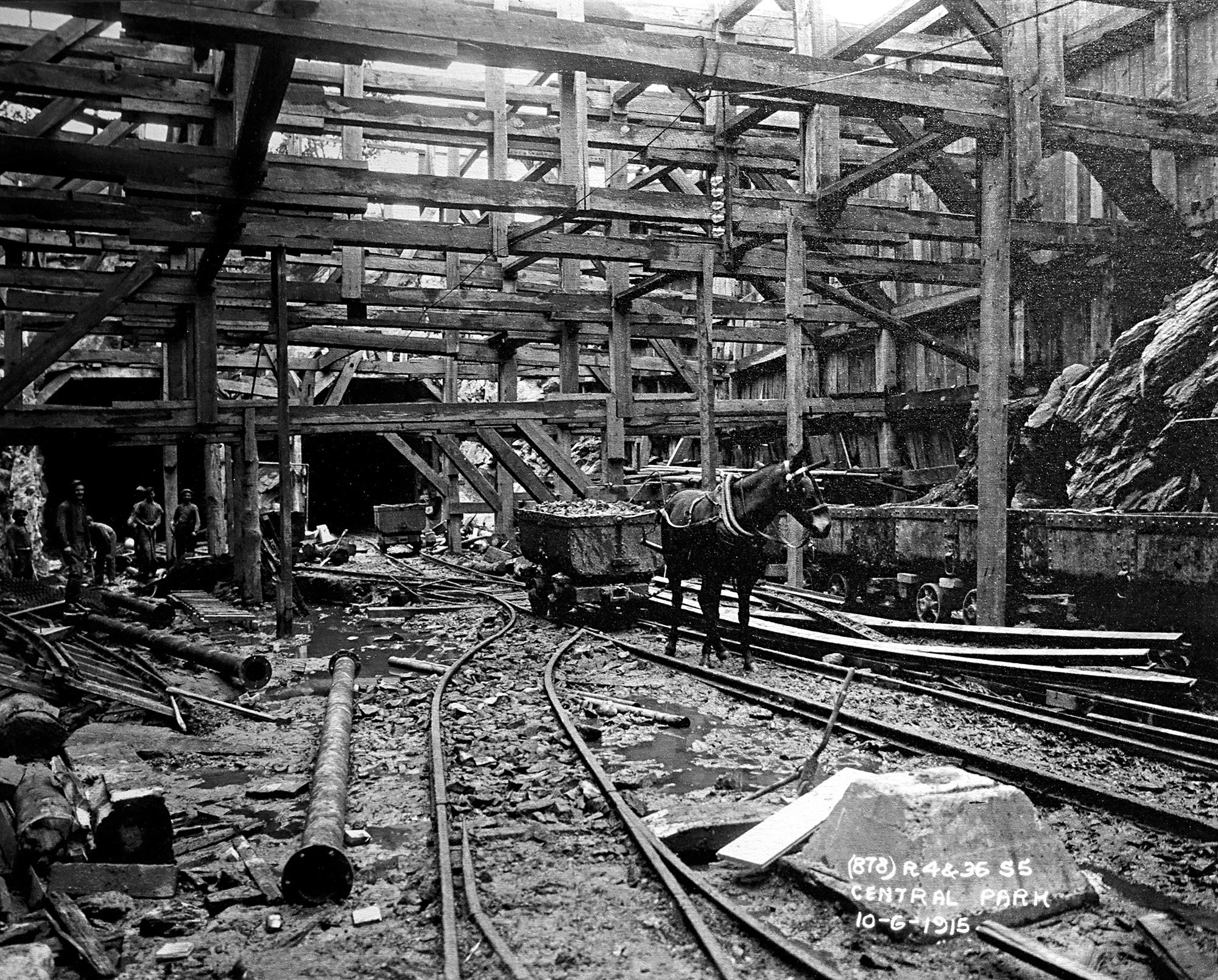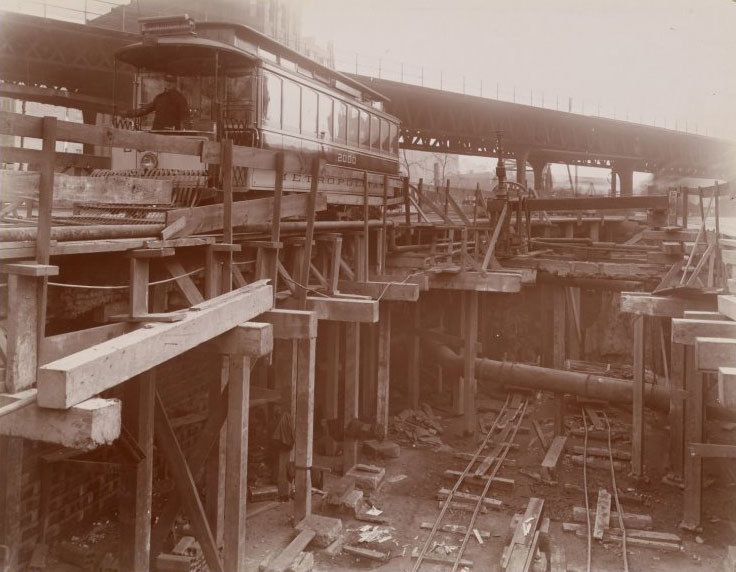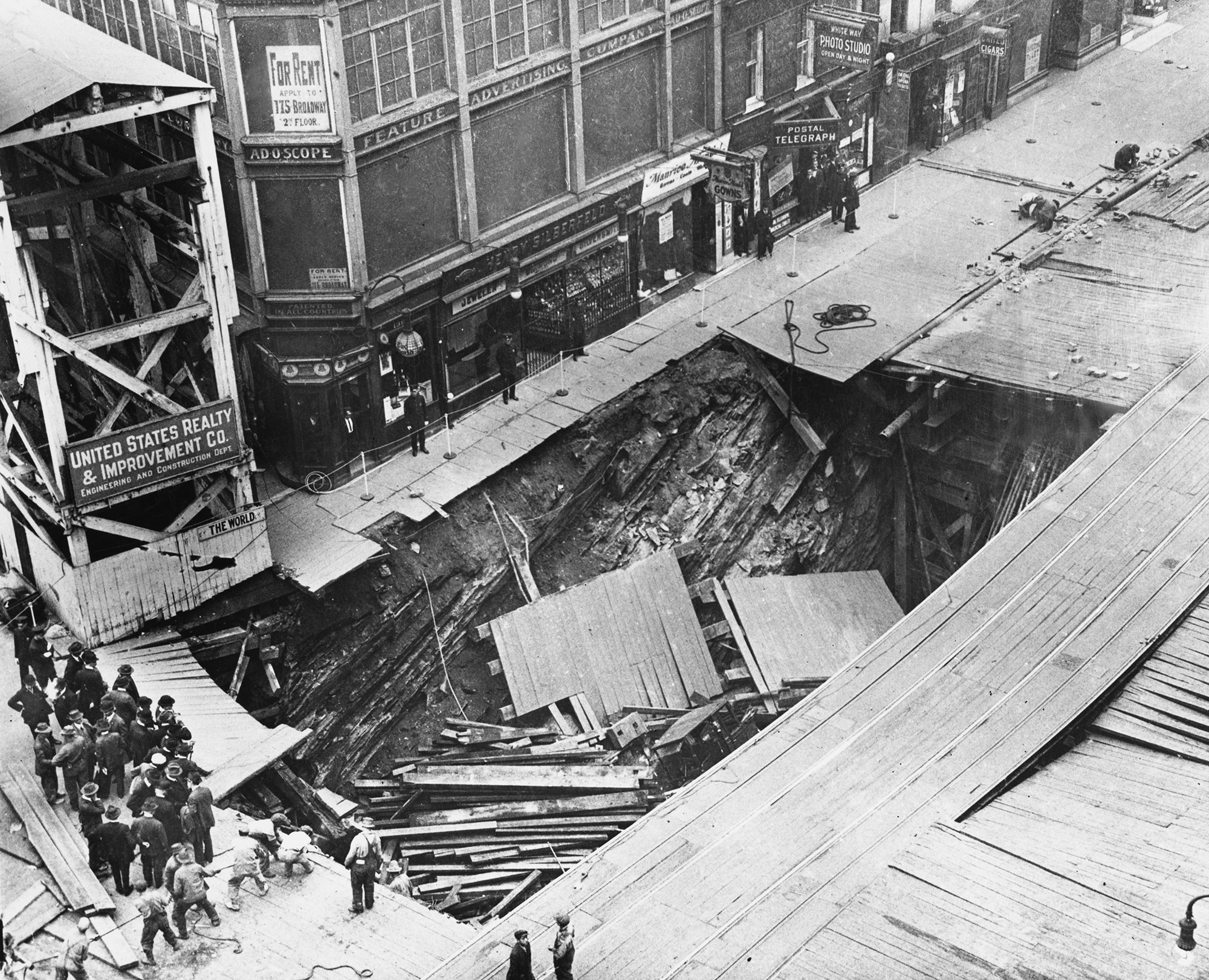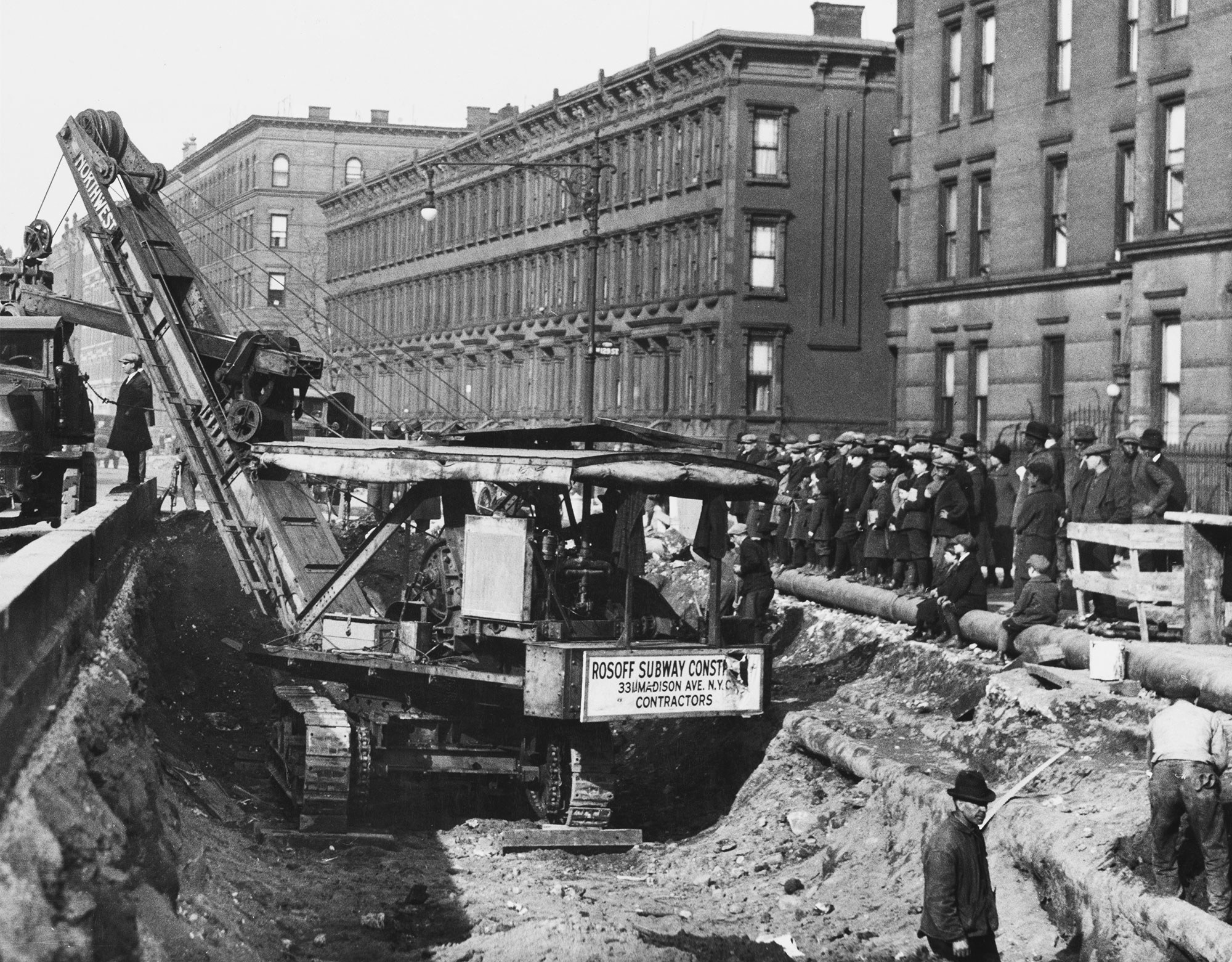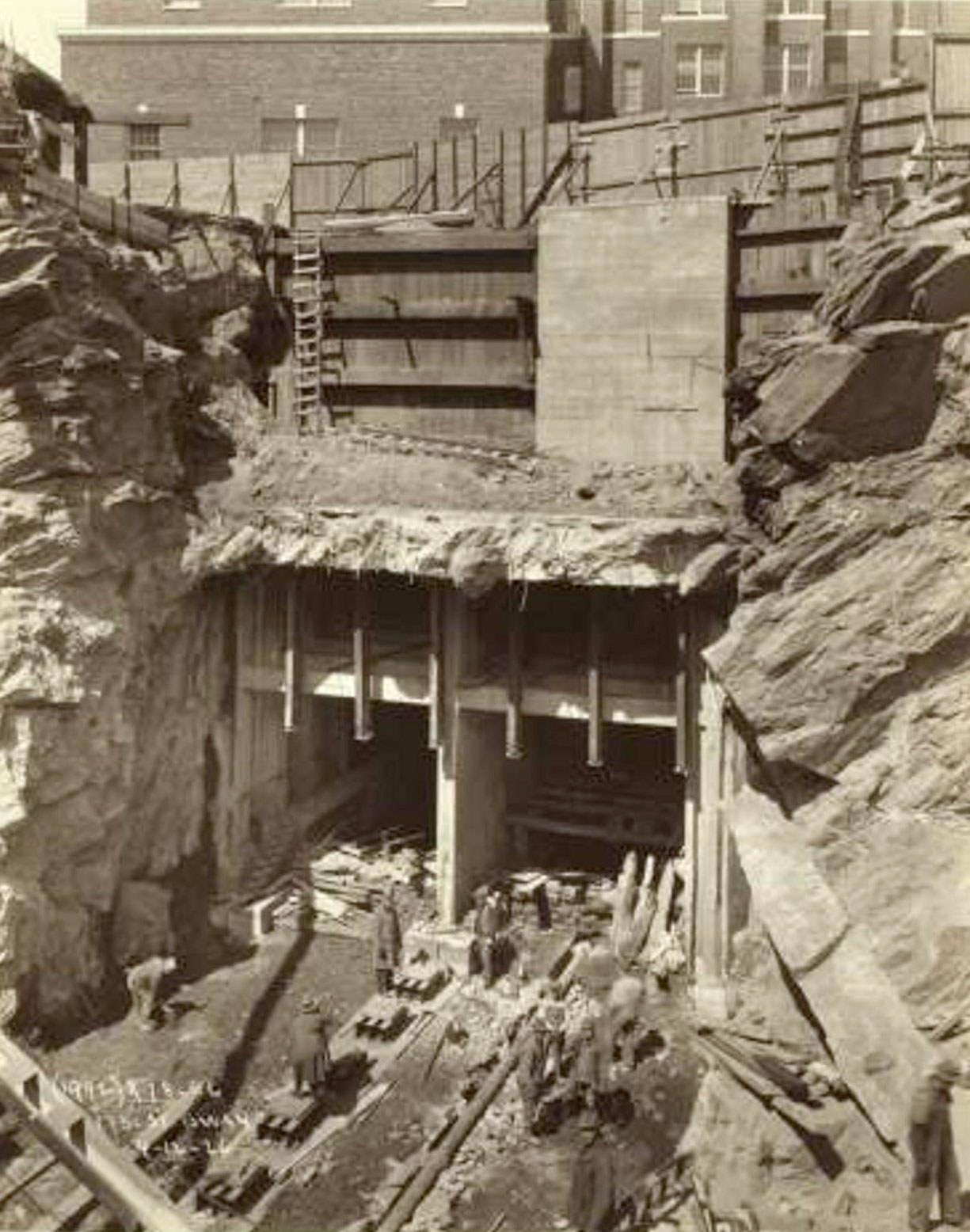New York City’s subway system has been running for over a century, its trains zooming under and above the five boroughs, transporting millions of commuters daily. It can be easy to not question its existence — since construction began on the subway in the early 1900s, it can seem as if the system has just always been.
“Subway Construction: Then and Now,” an article published by the New York Public Library, brings us back to the time when the subway was first being built. In it, we learn of contractors building the first lines using a “cut-and-cover” method. This method, where routes were built just under a road surface supported by beams, facilitated rapid construction, as less drilling was necessary. However, not all subway construction was quite this straightforward. Workers faced a number of obstacles, both natural and human-made. Working around rock formations, groundwater, New York City’s sewer system, water and gas mains, steam pipes, and electric conducts were a fact of life for many of the construction crews. They dealt with dangerous challenges that required engineers to ensure the stability of buildings and monuments — often directly above the tunnels they were digging.
Construction followed a rigorous schedule: Mornings were for demolition; the midday crew would remove the debris with mule carts; and the night crew did the rock drilling. A report in the New York Times titled “Tunneling Below Second Avenue” gives insight into how the construction process affected the city: “Efforts were quick – they finished in four years – but their blasts smashed windows and terrorized carriage horses, tunnels collapsed, killing workers, and swallowing storefronts.” Subway construction began in 1900 and has expanded in fits and starts as recently as 2017, when the 7 line was extended to Hudson Yards.
These photos provide a moment to look back and honor the workers who died building the largest transit system in the world.

